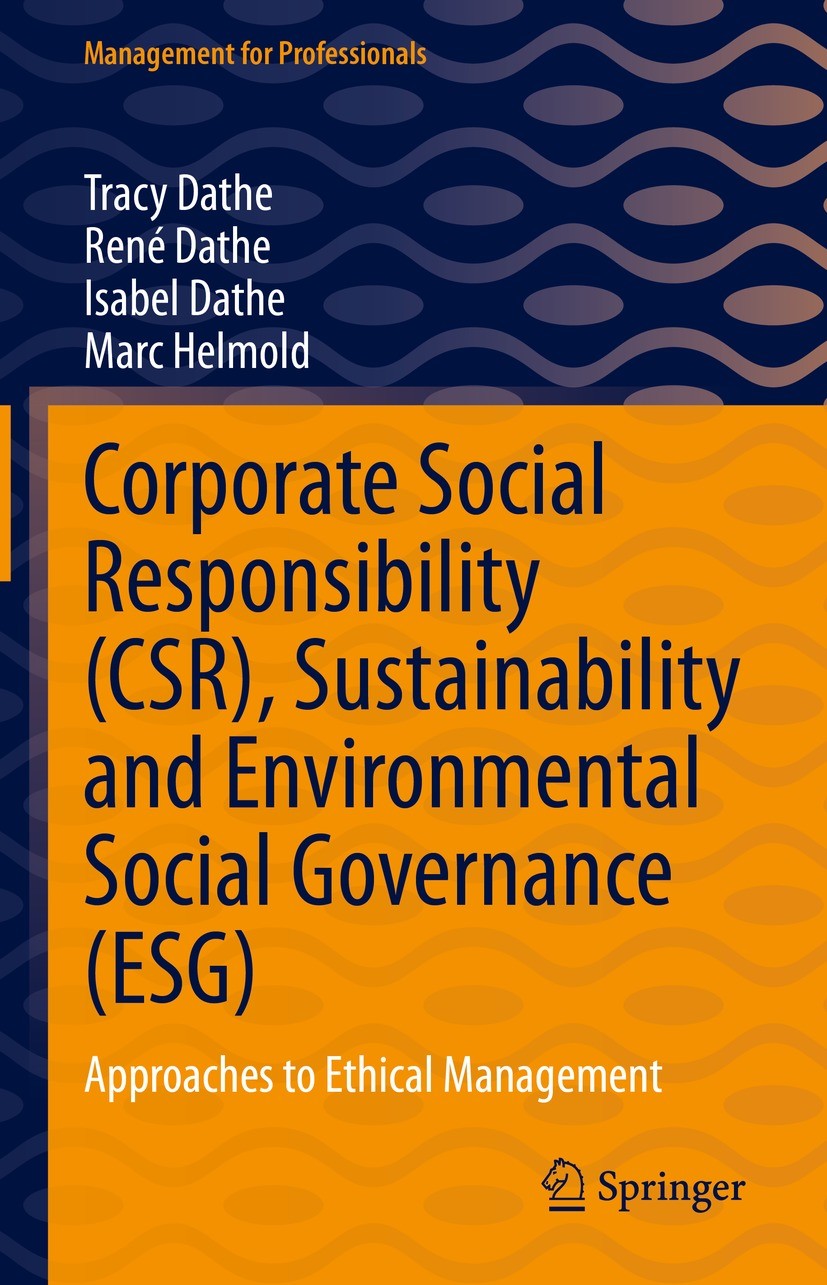| 书目名称 | Corporate Social Responsibility (CSR), Sustainability and Environmental Social Governance (ESG) | | 副标题 | Approaches to Ethica | | 编辑 | Tracy Dathe,René Dathe,Marc Helmold | | 视频video | http://file.papertrans.cn/239/238609/238609.mp4 | | 概述 | Provides an overview of CSR theories and related concepts.Describes CSR applications in relation to value chain functions.Features practical examples and country-specific recommendations | | 丛书名称 | Management for Professionals | | 图书封面 |  | | 描述 | .This book provides a comprehensive overview of corporate social responsibility (CSR) and its practical applications. In addition to the structured procedure with definitions and CSR approaches, functions within the value chain are described in comprehensive manner with reference to business practice. Business trends in special sectors such as innovation management and hospitality management are also covered. Numerous practical examples and country-specific recommendations for decisions in practical situations are also offered.. | | 出版日期 | Book 2022 | | 关键词 | CSR; sustainability; ESG; value chain; case study; practical example; country specific | | 版次 | 1 | | doi | https://doi.org/10.1007/978-3-030-92357-0 | | isbn_softcover | 978-3-030-92359-4 | | isbn_ebook | 978-3-030-92357-0Series ISSN 2192-8096 Series E-ISSN 2192-810X | | issn_series | 2192-8096 | | copyright | The Editor(s) (if applicable) and The Author(s), under exclusive license to Springer Nature Switzerl |
The information of publication is updating

书目名称Corporate Social Responsibility (CSR), Sustainability and Environmental Social Governance (ESG)影响因子(影响力)

书目名称Corporate Social Responsibility (CSR), Sustainability and Environmental Social Governance (ESG)影响因子(影响力)学科排名

书目名称Corporate Social Responsibility (CSR), Sustainability and Environmental Social Governance (ESG)网络公开度

书目名称Corporate Social Responsibility (CSR), Sustainability and Environmental Social Governance (ESG)网络公开度学科排名

书目名称Corporate Social Responsibility (CSR), Sustainability and Environmental Social Governance (ESG)被引频次

书目名称Corporate Social Responsibility (CSR), Sustainability and Environmental Social Governance (ESG)被引频次学科排名

书目名称Corporate Social Responsibility (CSR), Sustainability and Environmental Social Governance (ESG)年度引用

书目名称Corporate Social Responsibility (CSR), Sustainability and Environmental Social Governance (ESG)年度引用学科排名

书目名称Corporate Social Responsibility (CSR), Sustainability and Environmental Social Governance (ESG)读者反馈

书目名称Corporate Social Responsibility (CSR), Sustainability and Environmental Social Governance (ESG)读者反馈学科排名

|
|
|
 |Archiver|手机版|小黑屋|
派博传思国际
( 京公网安备110108008328)
GMT+8, 2025-11-13 14:41
|Archiver|手机版|小黑屋|
派博传思国际
( 京公网安备110108008328)
GMT+8, 2025-11-13 14:41


